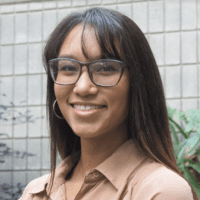
“Testing the Use of Long ssDNA Template for Transgene Free CRISPR/Cas9 Genome Editing in Plants”
Project Summary:
The clustered regularly interspaced short palindromic repeat (CRISPR)/CRISPR-associated 9 (Cas9) system is an immune response used by bacteria against viruses. This system uses the Cas9 nuclease to create a double stranded break at a DNA sequence determined by a guide RNA (gRNA). Homologous recombination is one of a few endogenous pathways for repairing damaged DNA. Normally homologous recombination repairs DNA by using a sister chromatid. Scientists can utilize this pathway to edit DNA by providing a dsDNA template that has a sequence of interest and ends that are homologous to the broken DNA. The homologous ends can be recognized by the repair enzymes, and the sequence of interest can be incorporated into the genome. Scientists have employed CRISPR/Cas9 genome editing by making transgenic plants carrying the system’s components. The public’s concerns about transgenic
plants have compelled the science community to study and test non-transgenic methods for gene editing. Here, we will non-transgenically edit rice cells by delivering Cas9 protein, gRNAs, and template DNA using biolistic and protoplast methods. We will then regenerate edited plants. To date, dsDNA templates have been employed in plants, but doing so risks random insertion of the template as a transgene. Usage of long ssDNA templates would avoid that risk, and long ssDNA templates have been found to be more efficient in animal systems. We will compare these two templates in plants by performing an allelic swap of the aluminum tolerance gene ART1 from the rice cultivar IR64 (aluminum sensitive), with the copy from the rice cultivar Nipponbare (aluminum tolerant) using dsDNA and long ssDNA templates. The results of this study may lead to improved template design for CRISPR/Cas9 genome editing in plants.
My Experience:
During my 10 weeks as a Boyce Thompson Institute intern, I have learned invaluable skills and life lessons. I have had the delightful chance to work in the plant transformation facility, which just opened on Cornell’s campus. There I collaborated with the director of the facility, Dr. Matthew Willmann, and together we worked through the everyday battles and triumphs of scientific research. This was my first deep introduction into a wet-lab project therefore, I am leaving with a plethora of skills and knowledge.
I am extremely thankful for this experience because, I can now communicate to others the importance of this field of research. My passions are still yet to be unfolded and with that I will continue to keep my mind open to all aspects of science. In hopes of one day generating a beautiful montage of interdisciplinary research with a diverse group of people.
